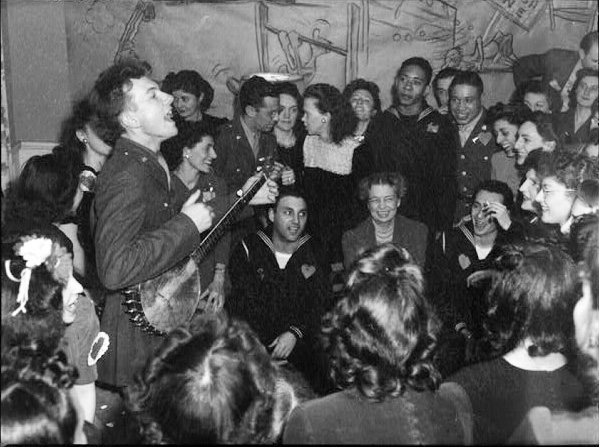|
Take Three Girls
''Take Three Girls'' is a British comedy-drama television series that aired on BBC1 from 17 November 1969 to 1 January 1971. It follows three young women sharing a flat in "Swinging London" (located at 17 Glazbury Road, West Kensington, W14). It was BBC1's first colour drama series. The first series features cellist Victoria (Liza Goddard), single mother Kate (Susan Jameson), and Cockney art student Avril (Angela Down). For the second series, Kate and Avril were replaced by journalist Jenny (Carolyn Seymour) and American psychology graduate Lulie (Barra Grant). Two series, each of 12 episodes, were shown on BBC1 between 1969 and 1971, with selected repeats between the series. Only 10 episodes of the original 24 still exist. lostshows.com A four-episode sequel, ''Take Three Women' ... [...More Info...] [...Related Items...] OR: [Wikipedia] [Google] [Baidu] |
Carolyn Seymour
Carolyn Seymour is an English actress, best known for portraying the role of Abby Grant in the BBC series ''Survivors (1975 TV series), Survivors'' (1975) and Queen Myrrah in the ''Gears of War (series), Gears of War'' franchise. Career She was born Carolyn von Benckendorf in Buckinghamshire to an Estonian father of Russian descent and an Irish mother. One of her early television roles was as Jenny in the BBC drama series ''Take Three Girls'', and an early film appearance was as Zita in the film ''Steptoe and Son (film), Steptoe and Son'' (1972) alongside Harry H. Corbett and Wilfrid Brambell. Her best-known movie role remains Grace Gurney in ''The Ruling Class (film), The Ruling Class'' (1972), opposite Peter O'Toole. She left ''Survivors'' at the end of its first series due to disagreements with the producers over the direction the show and her character were taking. She appeared in the ''Space: 1999'' episode "The Seance Spectre", and with Joan Collins in ''The Bitch (film), ... [...More Info...] [...Related Items...] OR: [Wikipedia] [Google] [Baidu] |
Verity Lambert
Verity Ann Lambert (27 November 1935 – 22 November 2007) was an English television and film producer. Lambert began working in television in the 1950s. She began her career as a producer at the BBC by becoming the founding producer of the science-fiction series ''Doctor Who'' from 1963 until 1965. She left the BBC in 1969 and worked for other television companies, notably having a long association with Thames Television and its Euston Films offshoot in the 1970s and 1980s. Her many credits as producer include ''Adam Adamant Lives!'', '' The Naked Civil Servant'', '' Rock Follies'', '' Minder'', ''Widows'', '' G.B.H.'', ''Jonathan Creek'', '' Love Soup'' and '' Eldorado''. She also worked in the film industry for Thorn EMI Screen Entertainment. She was an associate of the Beatles manager, Brian Epstein. From 1985 she ran her own production company, Cinema Verity. She continued to work as a producer until the year she died. Women were rarely television producers in Bri ... [...More Info...] [...Related Items...] OR: [Wikipedia] [Google] [Baidu] |
1971 British Television Series Endings
* The year 1971 had three partial solar eclipses (February 25, July 22 and August 20) and two total lunar eclipses (February 10, and August 6). The world population increased by 2.1% this year, the highest increase in history. Events January * January 2 – 1971 Ibrox disaster: During a crush, 66 people are killed and over 200 injured in Glasgow, Scotland. * January 5 – The first ever One Day International cricket match is played between Australia and England at the Melbourne Cricket Ground. * January 8 – Tupamaros kidnap Geoffrey Jackson, British ambassador to Uruguay, in Montevideo, keeping him captive until September. * January 9 – Uruguayan president Jorge Pacheco Areco demands emergency powers for 90 days due to kidnappings, and receives them the next day. * January 12 – The landmark United States television sitcom ''All in the Family'', starring Carroll O'Connor as Archie Bunker, debuts on CBS. * January 14 – Seventy Brazilian political prisoners are r ... [...More Info...] [...Related Items...] OR: [Wikipedia] [Google] [Baidu] |
1969 British Television Series Debuts
1969 (Roman numerals, MCMLXIX) was a common year starting on Wednesday of the Gregorian calendar, the 1969th year of the Common Era (CE) and ''Anno Domini'' (AD) designations, the 969th year of the 2nd millennium, the 69th year of the 20th century, and the 10th and last year of the 1960s decade. Events January * January 4 – The Government of Spain hands over Ifni to Morocco. * January 5 – Ariana Afghan Airlines Flight 701 crashes into a house on its approach to London's Gatwick Airport, killing 50 of the 62 people on board and two of the home's occupants. * January 14 – USS Enterprise fire, An explosion aboard the aircraft carrier USS Enterprise (CVN-65), USS ''Enterprise'' near Hawaii kills 28 and injures 314. * January 16 – First successful docking of two crewed spacecraft in orbit and the first transfer of crew from one space vehicle to another (by a space walk) between Soviet craft Soyuz 5 and Soyuz 4. * January 18 – Failure of Soyuz 5's service module to separ ... [...More Info...] [...Related Items...] OR: [Wikipedia] [Google] [Baidu] |
Christopher Morahan
Christopher Thomas Morahan CBE (9 July 1929 – 7 April 2017) was a British stage and television director and production executive. Biography Early life and career Morahan was born on 9 July 1929 in London, the son of film production designer Tom Morahan (1906-1969) and his wife, Nancy Charlotte Barker (1904-1977), an artist. He was educated at Highgate School followed by his national service. Originally thinking about a career as an architect, he realised it would be some years before he could earn a living and thus settled on working in the film industry. The director Thorold Dickinson advised him to learn about acting and the theatrical repertoire instead. He trained for the stage at the Old Vic Theatre School from 1947 with actor/director Michel Saint-Denis, designer Margaret Harris, and director George Devine. Initially an actor, he briefly worked as a stage manager on Orson Welles' touring production of ''Othello'', but refused to work on Welles' next production an ... [...More Info...] [...Related Items...] OR: [Wikipedia] [Google] [Baidu] |
35 Mm Movie Film
35 mm film is a film gauge used in filmmaking, and the film standard. In motion pictures that record on film, 35 mm is the most commonly used gauge. The name of the gauge is not a direct measurement, and refers to the nominal width of the 35 mm format photographic film, which consists of strips wide. The standard negative pulldown, image exposure length on 35 mm for movies ("single-frame" format) is four film perforations, perforations per Film frame, frame along both edges, which results in 16 frames per foot of film. A variety of largely proprietary gauges were devised for the numerous camera and projection systems being developed independently in the late 19th and early 20th centuries, along with various film feeding systems. This resulted in cameras, projectors, and other equipment having to be calibrated to each gauge. The 35 mm width, originally specified as inches, was introduced around 1890 by William Kennedy Dickson and Thomas Edison, using 120 film st ... [...More Info...] [...Related Items...] OR: [Wikipedia] [Google] [Baidu] |
Folk Rock
Folk rock is a fusion genre of rock music with heavy influences from pop, English and American folk music. It arose in the United States, Canada, and the United Kingdom in the mid-1960s. In the U.S., folk rock emerged from the folk music revival. Performers such as Bob Dylan and the Byrds—several of whose members had earlier played in folk ensembles—attempted to blend the sounds of rock with their pre-existing folk repertoire, adopting the use of electric instrumentation and drums in a way previously discouraged in the U.S. folk community. The term "folk rock" was initially used in the U.S. music press in June 1965 to describe the Byrds' music. The commercial success of the Byrds' cover version of Dylan's " Mr. Tambourine Man" and their debut album of the same name, along with Dylan's own recordings with rock instrumentation—on the albums '' Bringing It All Back Home'' (1965), '' Highway 61 Revisited'' (1965), and '' Blonde on Blonde'' (1966)—encouraged other folk ... [...More Info...] [...Related Items...] OR: [Wikipedia] [Google] [Baidu] |
BBC2
BBC Two is a British free-to-air public broadcast television channel owned and operated by the BBC. It is the corporation's second flagship channel, and it covers a wide range of subject matter, incorporating genres such as comedy, drama and documentaries. BBC Two has a remit "to broadcast programmes of depth and substance" in contrast to the more mainstream and popular BBC One. Like the BBC's other domestic TV and radio channels, it is funded by the television licence, and is therefore free of commercial advertising. It is a comparatively well-funded public-service channel, regularly attaining a much higher audience share than most public-service channels worldwide. Originally styled BBC2, it was the third British television station to be launched (starting on 21 April 1964), and from 1 July 1967, Europe's first television channel to broadcast regularly in colour. It was envisaged as a home for less mainstream and more ambitious programming, and while this tendency has c ... [...More Info...] [...Related Items...] OR: [Wikipedia] [Google] [Baidu] |
Cockney
Cockney is a dialect of the English language, mainly spoken in London and its environs, particularly by Londoners with working-class and lower middle class roots. The term ''Cockney'' is also used as a demonym for a person from the East End, or, traditionally, born within earshot of Bow Bells. Estuary English is an intermediate accent between Cockney and Received Pronunciation, also widely spoken in and around London, as well as in wider South Eastern England. In multicultural areas of London, the Cockney dialect is, to an extent, being replaced by Multicultural London English—a new form of speech with significant Cockney influence. Words and phrases Etymology of ''Cockney'' The earliest recorded use of the term is 1362 in passus VI of William Langland's ''Piers Plowman'', where it is used to mean "a small, misshapen Egg as food, egg", from Middle English ''coken'' + ''ey'' ("a rooster, cock's egg"). Concurrently, the List of mythological places, mythical land of luxury Co ... [...More Info...] [...Related Items...] OR: [Wikipedia] [Google] [Baidu] |
West Kensington
West Kensington, formerly North End, is an area in the ancient parish of Fulham, in the London Borough of Hammersmith and Fulham, England, 3.4 miles (5.5 km) west of Charing Cross. It covers most of the London postal area of W14, including the area around Barons Court tube station, and is defined as the area between Lillie Road to the south, Fulham Palace Road to the west, Hammersmith Road to the north, and West Brompton and Earl's Court to the east. The area is bisected by the major London artery the A4, locally known as the Talgarth Road. Its main local thoroughfare is the North End Road. It is predominantly a dense residential area with the Queen's Club in its midst and is bordered by the Lillie Bridge railway depot, the now defunct Earls Court Exhibition Centre site, Olympia Exhibition Centre and the commercial centres at Fulham and Hammersmith Broadway. Name "West Kensington" is an early marketing construct, a ploy by two Victorian developers who found ... [...More Info...] [...Related Items...] OR: [Wikipedia] [Google] [Baidu] |
Swinging London
The Swinging Sixties was a youth-driven cultural revolution that took place in the United Kingdom during the mid-to-late 1960s, emphasising modernity and fun-loving hedonism, with Swinging London denoted as its centre. It saw a flourishing in art, music and fashion, and was symbolised by the city's "pop and fashion exports", such as the Beatles, as the multimedia leaders of the British Invasion of musical acts; the mod and psychedelic subcultures; Mary Quant's miniskirt designs; popular fashion models such as Twiggy and Jean Shrimpton; the iconic status of popular shopping areas such as London's King's Road, Kensington and Carnaby Street; the political activism of the anti-nuclear movement; and the sexual liberation movement. Music was an essential part of the revolution, with "the London sound" being regarded as including the Beatles, the Rolling Stones, the Who, the Kinks and the Small Faces, bands that were additionally the mainstay of pirate radio stations lik ... [...More Info...] [...Related Items...] OR: [Wikipedia] [Google] [Baidu] |
BBC1
BBC One is a British free-to-air public broadcast television channel owned and operated by the BBC. It is the corporation's oldest and Flagship (broadcasting), flagship channel, and is known for broadcasting mainstream programming, which includes BBC News television bulletins, primetime drama and entertainment, and live BBC Sport events. The channel was launched on 2 November 1936 under the name BBC Television Service, which was the world's first Television in the United Kingdom, regular television service with a high level of image resolution. It was renamed BBC TV in 1960 and used this name until the launch of the second BBC channel, BBC Two, BBC2, in 1964. The main channel then became known as BBC1. The channel adopted the current spelling of BBC One in 1997. The channel's annual budget for 2012–2013 was £1.14 billion. It is funded by the television licence fee together with the BBC's List of BBC television channels and radio stations, other domestic television stati ... [...More Info...] [...Related Items...] OR: [Wikipedia] [Google] [Baidu] |







